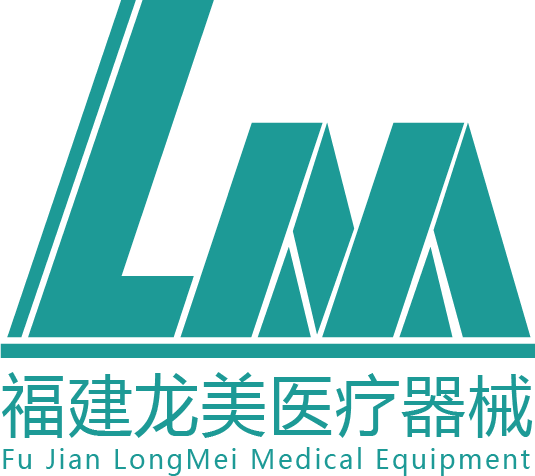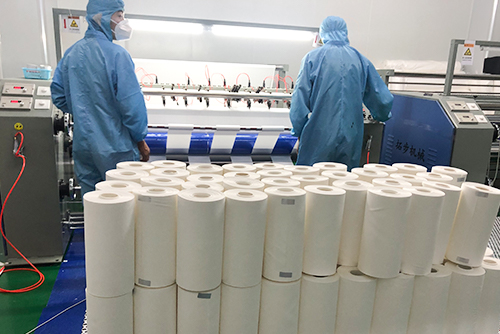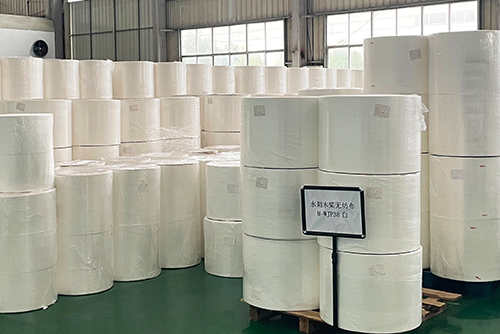
 Search
Search



 Search
Search



Non-woven fabrics are also known as non-woven fabrics. In the transformation and development of the domestic chemical fiber industry, industrial textiles dominated by non-woven fabrics have become another hot spot. At the same time, as the raw material of absorbent hygiene products such as baby diapers, adult incontinence products, and feminine hygiene products, the supply and demand scale of non-woven fabrics is also growing continuously.
In developing markets, with the improvement of residents' health awareness and medical awareness, the improvement of economic income, the increase of infant population and total population, and the rapid development of manufacturing industry, technological progress and innovation in the field of non-woven fabrics have been stimulated, and many non-woven fabrics have emerged in the market. local companies. In verticals such as hygiene, medical, automotive, filtration, agriculture and geotextiles, the market potential for nonwovens applications is huge.
In developed markets, there are many multinational companies, good channels, high market maturity, strong management team capabilities, technological and financial advantages, enterprises increase investment, increase production capacity, introduce new technologies for products, downstream health, agriculture, clothing, etc. The industry increases, and the market demand for non-woven fabrics is increasing.

The domestic non-woven industry is a perfectly competitive industry. The overall status of the industry is that the scale of enterprises is small, the number of enterprises is large, the industry concentration is not high, the east is strong and the west is weak, and the competition is fierce. In terms of scale, most of my country's non-woven enterprises are small in scale, with a large number of them, and the industry concentration is not high. After years of development, industrial clusters such as Pengchang Town in Hubei Province, Xialu Town in Zhejiang Province, and Zhitang Town in Jiangsu Province have been formed. From a geographical point of view, the distribution of the national non-woven industry is unbalanced. There are many non-woven factories in coastal provinces and cities with large production capacity; in some inland provinces and cities, there are fewer factories in the northwest and southwest regions, and the production capacity is relatively weak, forming the eastern region. A situation in which the regional power is stronger and the western region is weaker.
From the perspective of the capacity utilization rate of non-woven listed companies, the average capacity utilization rate of non-woven listed companies in 2020 will be around 90%. It is estimated that the production capacity of non-woven fabrics in 2020 will be roughly 9.76 million tons.
In 2021, the China Industrial Textiles Industry Association released the "Top 10 Enterprises in China's Nonwovens Industry in 2020/2021", among which the top four enterprises have disclosed relevant production capacity data according to eight public information. The production capacity concentration ratio of the eight companies was 7.9%. It can be seen that the production capacity of the non-woven industry is relatively scattered, and the concentration of production capacity is low.
With the rapid development of China's economy and the rising income of residents, the demand for non-woven fabrics has not been fully released. For example, the market for sanitary napkins and baby diapers is very broad, and the annual demand is in the hundreds of thousands of tons. Medical care is gradually developed, and China's population is seriously aging, and the use of non-woven fabrics in medical care is also showing a rapid growth trend. The market for hot-rolled cloth, SMS cloth and air-laid cloth, filter material, insulating cloth, geotextile and medical cloth is large and will become larger and larger in industry and engineering.
In addition, in the two fields of disposable hygienic absorbent materials and wipes, the trend of consumption upgrading is very obvious. With the development of the economy, people have higher and higher requirements for the functionality, comfort and convenience of sanitary care products, and non-woven fabrics with specific properties are more and more widely used in related fields, and the sales of disposable non-woven fabrics The growth rate of the total amount has also continued to be higher than the growth rate of the overall non-woven fabric. In the future, in terms of disposable absorbent materials and wiping supplies, the technical upgrade of non-woven fabrics (performance improvement, unit gram weight reduction, etc.) is still a major trend.